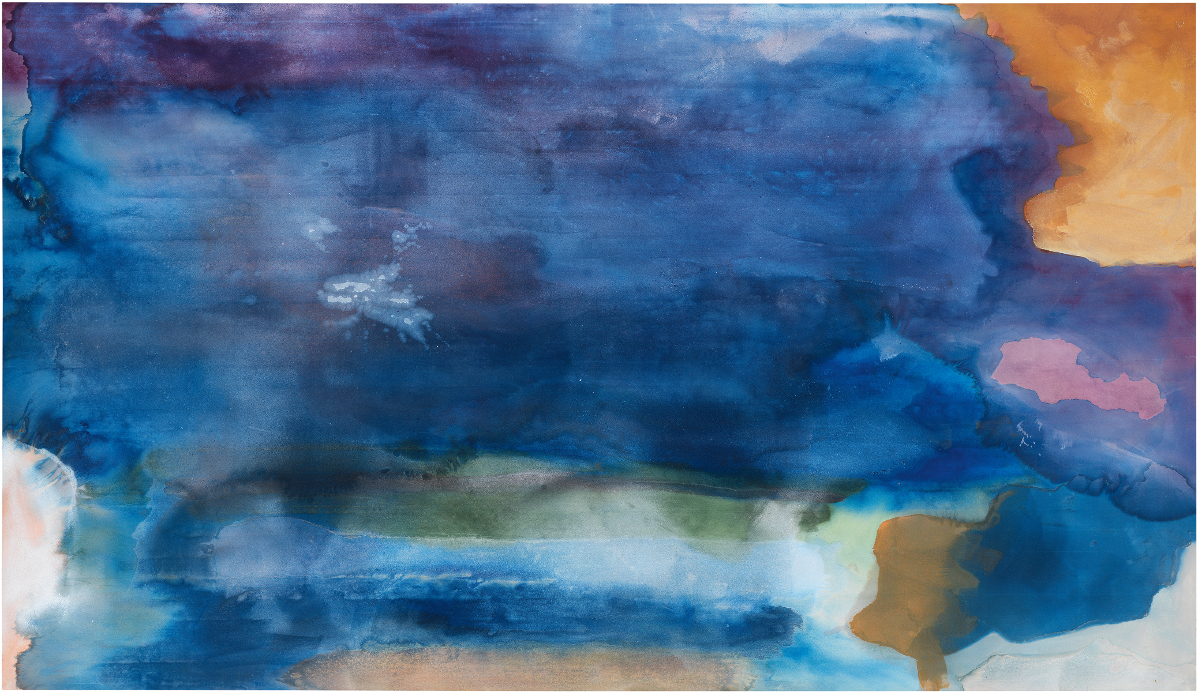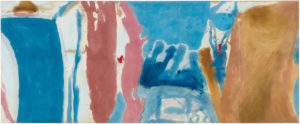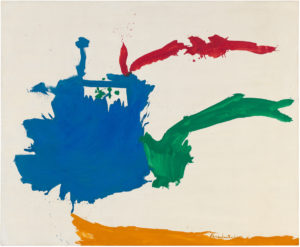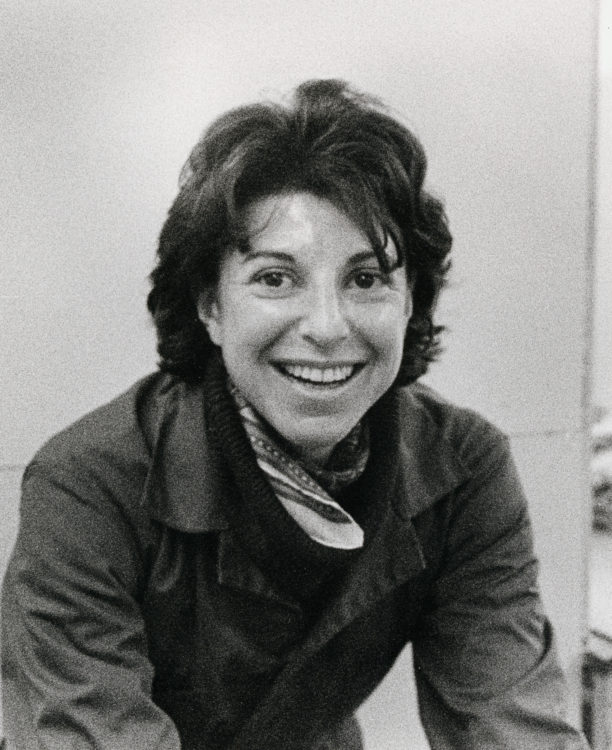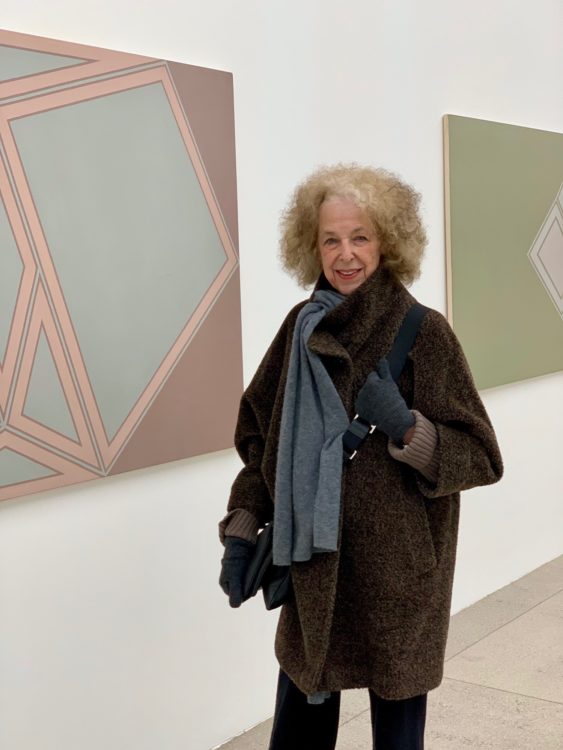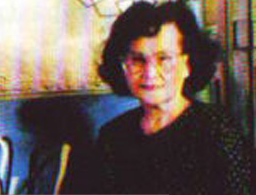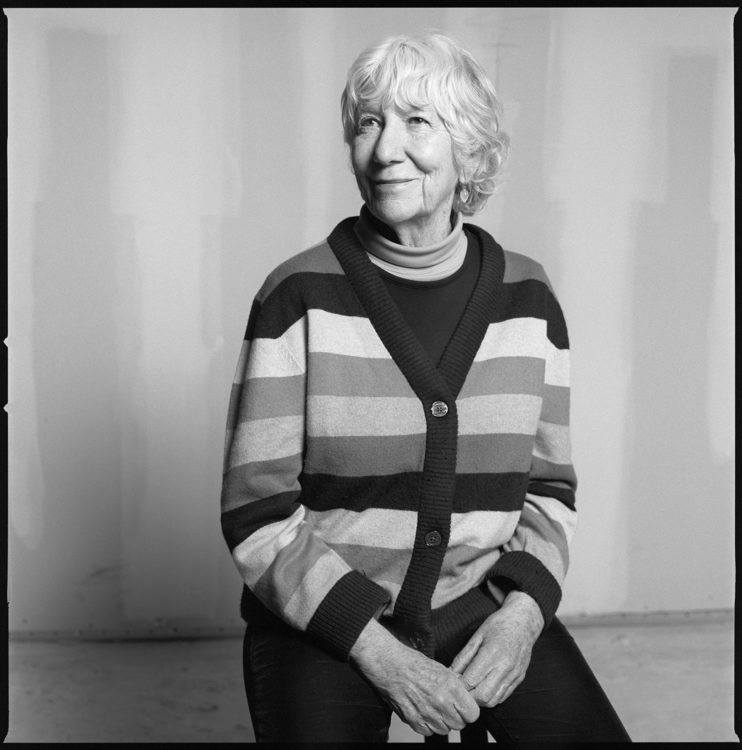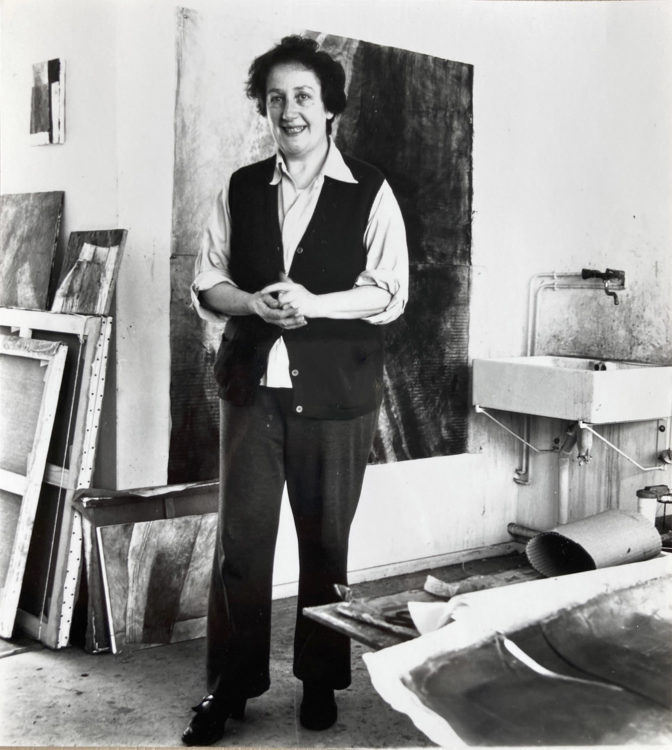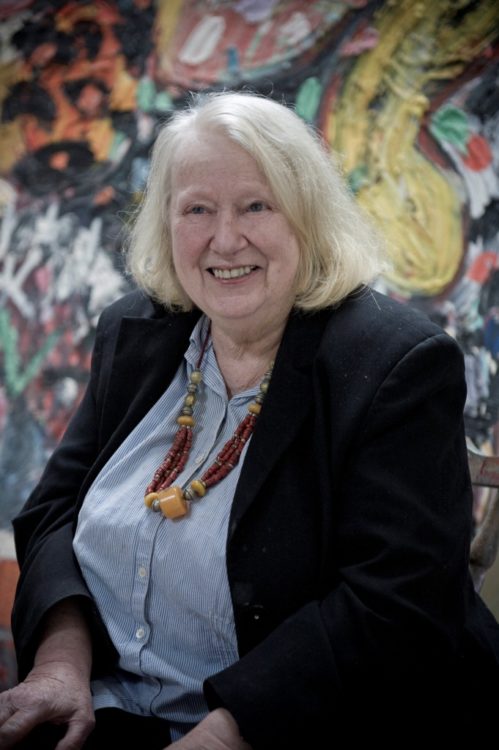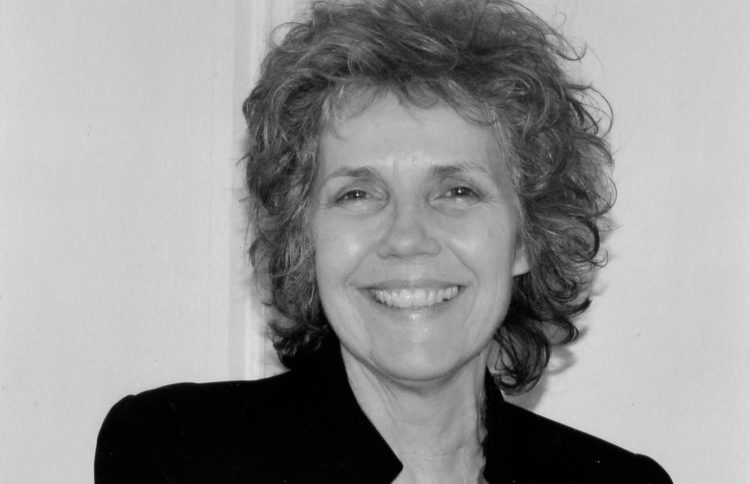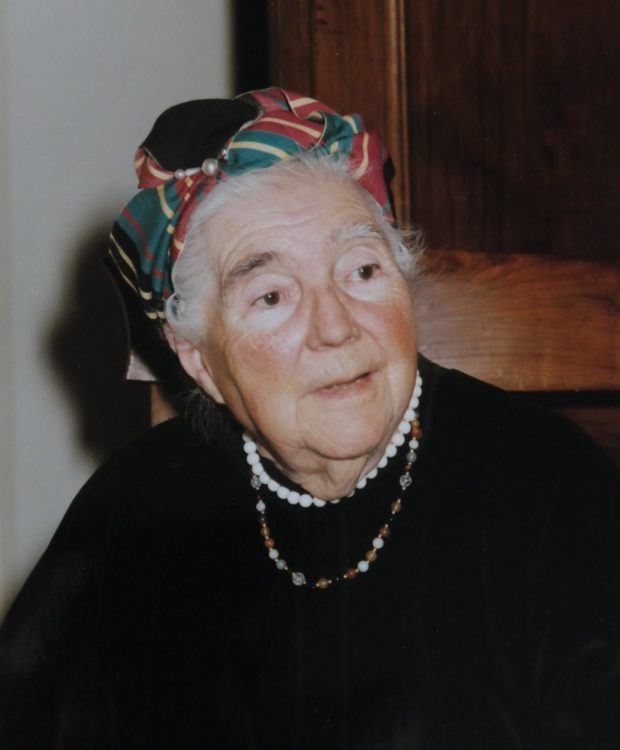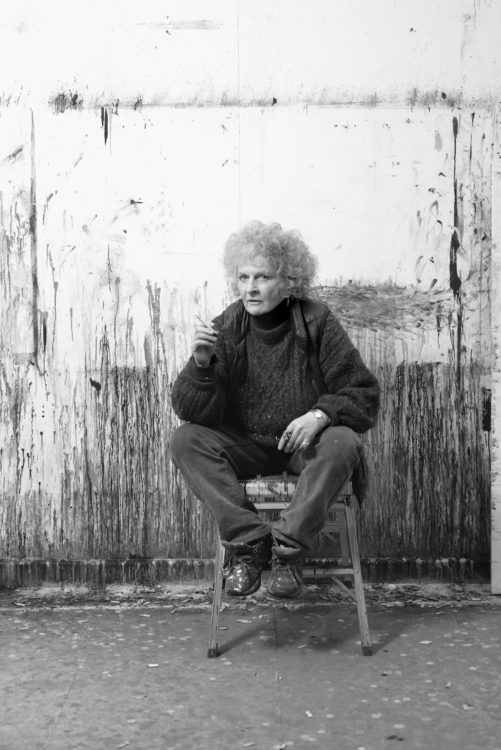Review
Helen Frankenthaler, Riverhead, 1963, acrylic on canvas, 208.9 x 363.2 cm, 82 1/4 x 143 in., © Helen Frankenthaler Foundation, Inc., © ADAGP, Paris, © Photo: Rob McKeever, Courtesy Gagosian
Alongside the 58th Venice Biennale, Palazzo Grimani de Santa Maria Formosa is presenting PITTURA/PANORAMA, an exhibition of works by the American painter Helen Frankenthaler (1928–2011) highlighting the relationship between the evolution of her painting throughout her career and the theme of the panoramic landscape.
The event, organised in association with the Helen Frankenthaler Foundation and Venetian Heritage, and in partnership with the Gagosian Gallery, marks the first time H. Frankenthaler’s work has been shown in Venice since 1966, when the artist represented the United States alongside Ellsworth Kelly (1923–2015), Roy Lichtenstein (1923–1997) and Jules Olitski (1922–2007).
As a major artist from the second generation of American abstract expressionist painters, H. Frankenthaler played a major part in the transition of the movement toward colour field painting and inspired painters such as Morris Louis (1912–1962) and Kenneth Noland (1924–2010).
Fourteen of H. Frankenthaler’s canvases, on loan from her foundation in New York, hang in the upper floor of the sixteenth-century Venetian palace. They span forty years of work, from the 1950s to the 1990s.
The small number of pictures presented may feel somewhat disappointing. However, the selection, curated by John Elderfield,1 provides sufficient insight into the entirety of the American painter’s career.
Throughout the mostly chronological layout, one may recognise her earlier paintings, such as 10/29/52 (1952) and Window Shade No. 2 (1952), which bring to mind some of Jackson Pollock’s (1912–1956) compositions. H. Frankenthaler met J. Pollock in 1951 at his studio. While she learned a few lessons from the American painter – the use of large formats, working on a canvas laid out on the floor – she also quickly found her own distinctive style, the precepts of which she crystallised in Open Wall (1953), and which resurface in the wonderful Riverhead (1963). Here her paints are heavily diluted with turpentine, the large horizontal canvases contain spills of bright colours of varying intensities, depending on the quantity of paint poured. Despite being completely abstract, these paintings immediately bring to mind landscapes and, specifically because of their format, panoramas.
All through her career, H. Frankenthaler never ceased experimenting. In the 1960s and ’70s, she painted her colour fields closer together, almost bringing them to the point of figuration (Pink Bird Figure, 1961), or made them more schematic in order to further explore the flatness of the canvas and open up the pictorial space as much as possible (Italian Beach, 1960; New Paths, 1973).
During the following decade, H. Frankenthaler turned to a new form of artistic vocabulary, using atmospheric colours and applying them to the surface of the canvas in drops, dots, or bolder lines to achieve a more dynamic composition (For E.M., 1981; Brother Angel, 1983).
Halfway through the exhibition, excerpts from two documentary films (American Art in the 1960s by Michael Blackwood, 1972, and Frankenthaler: Toward a New Climate by Perry Miller Adato, 1978) give us further insight into the artist’s creative process and showcase her incredible sense of colour.
The exhibition ends with lesser-known works from the early 1990s, some of which explicitly reference nature in their titles (Snow Basin, 1990; Maelstrom, 1992). These more dramatic paintings show an increased use of texture and a new range of colours, including a greater use of white (Barometer, 1992).
PITTURA/PANORAMA reaffirms H. Frankenthaler’s place among the greatest colourists of American abstraction and permanently brushes aside the judgements of the critics who, at the time, rebuked her for making art that they deemed “too gentle” or “too feminine”.
PITTURA/PANORAMA. Paintings by Helen Frankenthaler, 1952-1992, from 7 May to 17 November 2019, Palazzo Grimani (Venice, Italy).
Chief curator of painting and sculpture at the Museum of Modern Art, New York from 2003 to 2008.
Mathilde Bartier, "Helen Frankenthaler: the triumph of colour." In , . URL : https://awarewomenartists.com/en/magazine/helen-frankenthaler-le-triomphe-de-la-couleur/. Accessed 15 January 2026
